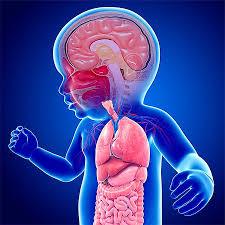Developing 3D brain organoids to model perinatal brain injury Suitability: Honours/PhD Location: The Ritchie Centre, Hudson Institute of Medical Research; Level 5, Translational Research Facility, Monash Medical Centre, Clayton Project Leaders: Dr Courtney McDonald, Prof Michael Fahey Email: courtney.mcdonald@monash.edu Phone: 03 8572 2799 Project description: We are developing 3dimensional human brain organoids using induced pluripotent stem cells (iPSCs). We can model the effect of neuroinflammation in our brain organoids, thereby creating an in vitro model of perinatal brain injury. We will use this in vitro 3D model to test the mechanism of action of umbilical cord blood and mesenchymal stem cells, specifically assessing the paracrine and direct effects and determine the optimum stem cell type for reducing neuroinflammation. This project will involve extensive cell culturing with both iPSCs and perinatal stem cells, multicolour flow cytometry and molecular analysis using PCR and protein assays.
Optimising a model of preterm brain injury in the neonatal rat Suitability: Honours/PhD Location: The Ritchie Centre, Hudson Institute of Medical Research; Level 5, Translational Research Facility, Monash Medical Centre, Clayton Project Leaders: Dr Courtney McDonald, Dr Tayla Penny Email: courtney.mcdonald@monash.edu Phone: 03 8572 2799 (Dr McDonald)
This project will involve small animal work including long-term monitoring and behavioural testing. You will also learn techniques involving immunohistochemistry, histology, microscopy, and molecular analysis.
Neural stem cell therapy for preterm brain injury Suitability: Honours/PhD Location: The Ritchie Centre, Hudson Institute of Medical Research; Level 5, Translational Research Facility, Monash Medical Centre, Clayton Project Leaders: Dr Courtney McDonald, Prof Suzie Miller, Prof Michael Fahey Email: courtney.mcdonald@monash.edu Phone: 03 8572 2799 Project description: Neural stem cells (NSCs) offer great promise as a neuroprotective therapy against a range of neurological conditions, like cerebral palsy. NSC therapy has been shown in small animal models to reduce brain injury. However, NSCs have never been tested in a large animal model of preterm brain injury. In this project we will assess whether NSC transplanted directly into the preterm brain can engraft and regenerate damaged brain tissue. For this project we will use our in-utero sheep model of umbilical cord occlusion to induce preterm brain injury and test early and late treatment with NSCs to determine the optimal time of NSC therapy. As part of this project, you will learn large animal surgery, fetal monitoring, brain immunohistochemistry, protein analysis and cell culture techniques.
Project description: Babies that are born preterm are at risk of experiencing injury to the white matter of the brain, and as such developing neurodevelopmental disorders such as cerebral palsy. Cerebral palsy is the most common childhood motor disability and is associated with both motor and cognitive deficits. This project aims to develop and optimise a small animal model of preterm brain injury using neonatal rat pups. The effectiveness of this model can be tested by utilising a suite of behavioural tests previously determined by our group, as well as through analysis of brain tissue using immunohistochemistry, flow cytometry and PCR. This model will also be used to test potential therapies for preterm brain injury, including umbilical cord blood (UCB) stem cell therapies. The Ritchie Centre | Student Research Projects 2023
20








